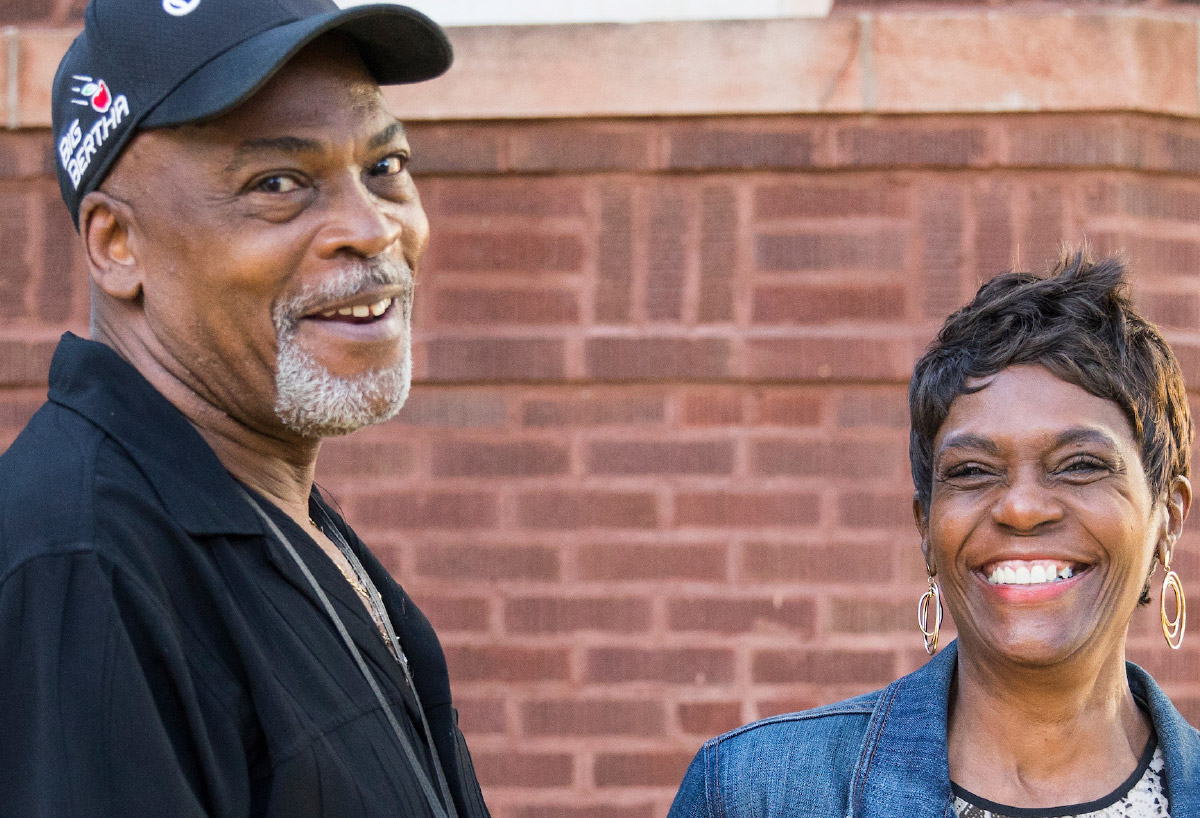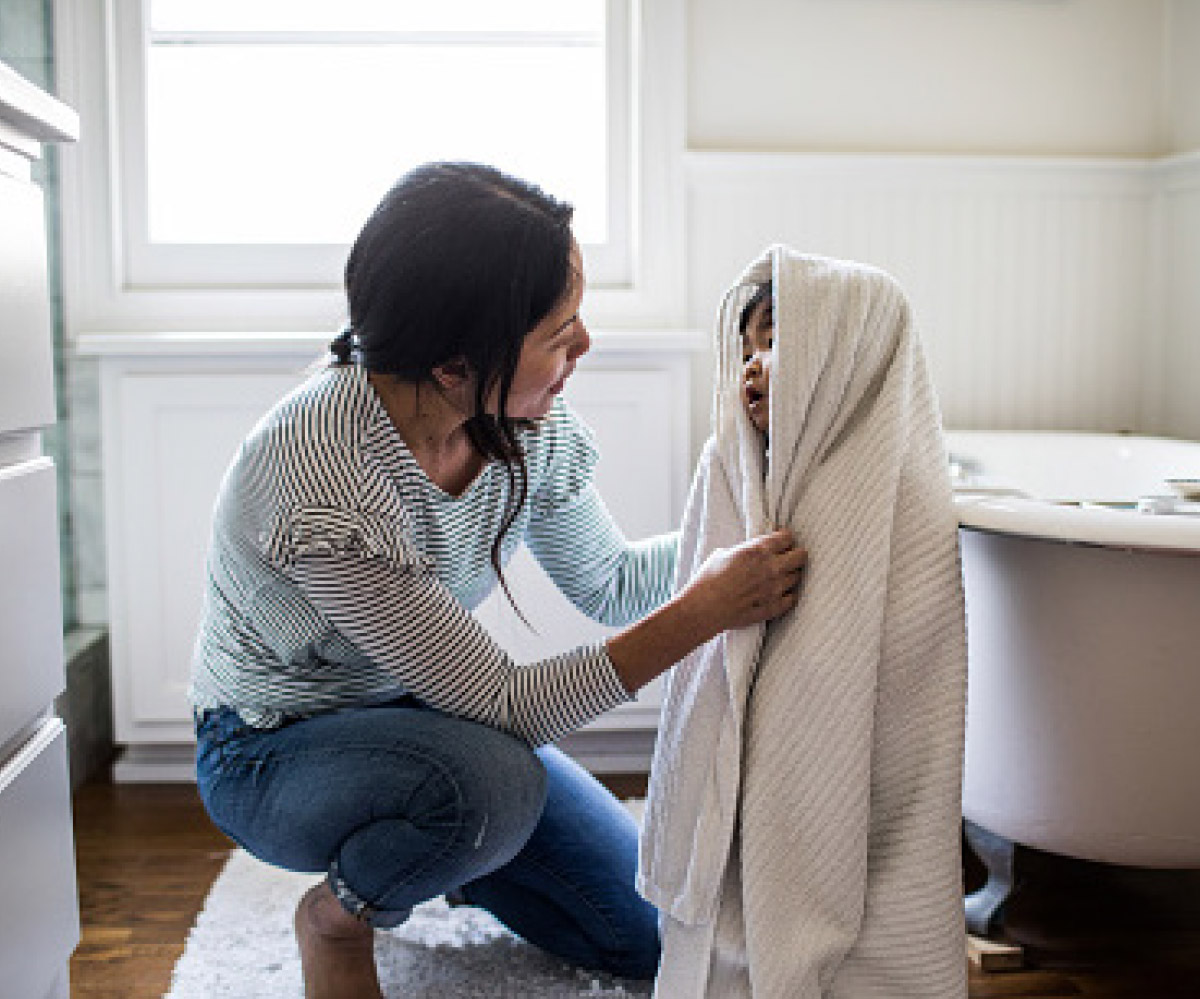Stabilizing Renters + Buildings During COVID
Preservation Lab Process and Overview
The Preservation Lab is a joint effort of The Preservation Compact and the Institute for Housing Studies at DePaul University. The mission of the Lab is to investigate challenging and complex preservation topics by developing research and analysis, engaging stakeholders, and capturing discussion and conclusions in a policy brief.
The goal of this report is to inform future decisions by local agencies. This first Preservation Lab series focused on identifying rental assistance program characteristics to most effectively stabilize vulnerable tenants and rental buildings as the COVID-19 pandemic and economic crisis unfolds. The Lab convened a series of virtual meetings with a diverse group of issue-area stakeholders to 1) understand the potential impacts of COVID-19 on Chicago’s rental market and identify the types of tenants and properties that are most at-risk in a prolonged downturn; 2) discuss rental assistance and other support programs that are already in place; and 3) make recommendations about designing rental assistance programs to better serve the needs of vulnerable renters and properties during the pandemic and beyond.
Download the pullout Fact Sheet
Core Group Members

Allison Clements
IHC

Andrew Geer
Enterprise

Anne Evens
Elevate Energy

Betsy Benito
CSH

Bill Eager
POAH

Bob Palmer
Housing Action Illinois

Chris Nash
Red Stone Equity

Daniel Hertz
City of Chicago

Deborah Bennett
Polk Bros Foundation

Jennifer Arwade
Communities United

Kate Walz
Shriver Center

Kevin Jackson
CRN

Lisa Palumbo
Legal Aid Chicago

Lissette Castañeda
LUCHA

Mark Swartz
LCBH

Meghan Harte
LISC Chicago

Myriam Weaver
IHDA

Nicki Pecori Fioretti
IHDA

Rafael Leon
CMHDC

Susan Campbell
Cook County
Stabilizing Renters + Buildings During COVID
The COVID-19 pandemic has resulted in a far-reaching public health crisis and economic recession. Reports indicate that despite small recent recoveries, millions of workers have lost their jobs since the pandemic began. While the economic crisis has impacted most aspects of the economy, lower-wage hourly workers, especially those working in the service industry, face increased financial risks. These workers were in occupations first hit by sheltering-in-place orders, are predominantly lower- and moderate-income, and remain highly vulnerable to a slow and uncertain recovery for many industries.
1 in 5 Renters Behind on Rent During Pandemic, With Black and Latino Renters Facing Greatest Hardship
Share of adult renters saying they are behind on last month’s rent, as of week ending July 21
Source CBPP analysis of Census Bureau Household Pulse Survey
At-risk population: Renters
The depth and breadth of job losses mean substantial lost income and increasingly vulnerable housing situations for many renters and property owners that will likely become more precarious the longer an economic downturn continues. The Institute for Housing Studies analyzed workers in the city of Chicago to better understand how many were in occupations particularly vulnerable to layoffs in the early months of COVID-19 due to shelter-in-place orders. The analysis found that that there are roughly 300,000 Chicago households with a worker in an occupation most vulnerable to layoffs, and more than 183,000 – or over 60 percent – are renter households. This represents 41 percent of renter households with at least one member in the workforce. Lower-income renter households are especially hard hit as 53.6 percent of working renter households earning less than $30,000 have an at-risk worker, and nearly half of renter households with an at-risk worker were already housing insecure, meaning they were cost-burdened – paying over 30 percent of their income in rent.
Most reports point to a slow and prolonged economic recovery. The most recent data collected via the weekly Census Pulse survey indicate that approximately 19% of renters were not able to make their most recent rent payment and 34% fear that won’t be able to make their next month’s rent payment.
183,000
Chicago renter households with a worker in an occupation most vulnerable to layoffs
53.6%
53.6 percent of working renter households earning less than $30,000 have an at-risk worker
12.1-14.9M
12.1 million and 14.9 million US households will need assistance
$5.5B
$5.5 billion per month in rental assistance is needed in the U.S.
Recent research from the Urban Institute highlights the need for future rental housing assistance to stabilize impacted renter households. It anticipates that between 12.1 million and 14.9 million US households will need assistance in the coming months and that to sufficiently support this need, $5.5 billion per month in rental assistance must be allocated nationally to meet the need. This amount assumes the loss of enhanced coverage from the CARES Act and state-level Unemployment insurance. Under this scenario, Illinois would need $162,877,135 per month in rental support.

At-risk stock: NOAH
Seventy-five percent of low cost rental housing in the United States is unsubsidized and privately owned. This stock is often referred to as “Naturally Occurring Affordable Housing,” or NOAH. In Chicago, the vast majority of the NOAH stock is in low- and moderate income neighborhoods, and is generally owned by local entrepreneurs and owner-occupants, not large real estate companies.
NOAH is a vital part of our stock. Yet because owners may be smaller, with no subsidy or relationships to government housing agencies, they are also challenging to find, let alone serve, with government assistance. Small NOAH operators are efficient because their business model is uncomplicated, making them hesitant to dive into typical complex government processes.
The NOAH stock also includes two-, three-, and four-flats, many of which are owner-occupied. In Chicago, 2-4 unit properties make up 34% of the rental supply citywide. Even before the current crisis, this same supply was being lost and, in some neighborhoods, becoming less affordable. As we learned from the 2009 financial crisis, the stability of an owner-occupied 2-4 unit building is particularly fragile, and the risk of foreclosure can increase substantially if a tenant loses income.
“There’s a statistic from prior to COVID that in the event of an emergency 60% of households would not be able to come up with $1000. When we layer the pandemic onto that it’s very sobering. We know there are a lot of people suffering right now.”
Nicki Pecori Fioretti, Illinois Housing Development Authority
Indeed, national research on the initial impact of the COVID-19 pandemic indicates that tenants in 2-4 unit buildings who lose income are more at risk of missing rent, and that small, individual investors are also less able to weather the pandemic. These owner-occupants are barely aware of government housing agencies, let alone how to successfully participate and comply with a subsidy program.
Finally, renters living in NOAH buildings in low- and moderate-income neighborhoods may be most likely to be affected by the economic crisis. Renter groups that are not eligible for federal assistance, like undocumented immigrants, are also likely to live in NOAH stock and are understandably wary of government programs.
An effective rental assistance program must serve this at-risk tenant population in fragmented buildings disconnected from subsidy – buildings already strained by demands of the global pandemic.
People of Color More Likely in Impacted Industries

COVID Policy Responses
The pandemic drove rapid federal, state, and local action to expand Unemployment and housing assistance to stabilize affected populations and the economy. While they helped initially, the assistance programs are limited, and need more time and resources to meet ongoing needs.
Unemployment: The Unemployment expansion in the CARES Act included expanded benefits, initially $600 per week, and a longer timeframe to receive benefits. Research and analysis indicate that expanded Unemployment has played an important role in stabilizing households who have lost income or employment, and has contributed to the higher than expected rent collection rates.
Challenge: The expansion was time limited, and has been reduced to $300 per week. This expansion is also time limited. Without an extension, benefits will return to their pre-CARES Act level, or about half of a recipient’s previous weekly salary. This devastating drop will trigger enormous housing instability for tenants, and threaten the viability of affected rental buildings.

Forbearance: Some multifamily owners can access loan forbearance programs, which allow deferred mortgage payments. The federal program applies to Fannie, Freddie, and FHA loans. Guidance allows servicers to extend existing forbearance agreements for an additional three months, and allow owners to request modifications to the scheduled plan.
Challenge: While forbearance might help some in the short-term, some repayments are required at an alarmingly fast rate. Nor would forbearance help owners withstand a dramatic drop in rent, since mortgage payments comprise less than half of a building’s overall expenses.
Eviction Moratoria: Different eviction moratoria at the federal, state, and local levels have curbed eviction activity for nonpayment of rent. The CDC’s national moratorium on eviction for nonpayment of rent extends through December 31, 2020. Locally, Illinois Governor Pritzker issued a moratorium on filing and executing evictions through October 22, 2020. The City of Chicago passed an ordinance extending a local eviction moratorium for two months past the end of the statewide moratorium. The City also passed tenant protection ordinances and created a program to encourage owners and tenants to work together to avoid eviction through a unique solidarity pledge.
Challenge: While eviction moratoria are useful, they will eventually end, creating a cliff that many fear will lead to a wave of evictions, and increased foreclosures for small building owners.
Emergency Rental Assistance: The City of Chicago allocated $33 million for housing COVID relief, with about $22 million for rental housing. The Chicago Department of Housing also developed a new $3 million Emergency Relief for Affordable Multifamily Program to assist providers of affordable housing.
The State of Illinois allocated the most CARES Act money in the country for housing relief, allocating an unprecedented $396 million to the Illinois Housing Development Authority (from Illinois’ CARES Act dollars) to provide emergency housing assistance.
Challenge: Rental assistance provides critical support by protecting renters from eviction and keeping rental owners and their buildings solvent and stable.
$33M
The City of Chicago allocated $33 million
$396M
The State of Illinois allocated an unprecedented $396 million to the Illinois Housing Development Authority
1.2M
1.2 million unemployment claims in Illinois
Guiding Principles to Serve the COVID Need
Expanded Unemployment benefits were substantially reduced at the end of July, which means rental assistance programs are more critical than ever.
Illinois already funds rental assistance programs, including IHDA’s Rental Housing Support Program, and the Chicago Low Income Housing Trust Fund. The Chicago Housing Authority, Housing Authority of Cook County, and other local housing authorities also continue administering the federal Housing Choice Voucher program. These are strong programs, but they were not built to deploy 10 times more dollars with lightning speed. A new, efficient design and delivery mechanism must be paired with nimble administration to serve affected renters, and the housing stock where they live.
“The response should not just be rental assistance and mortgage assistance coming down from above but should include engagement with owners and renters who are working to drive solutions in their communities.”
Jenny Arwade, Communities United
Tenants who are immigrants or members of other historically underserved groups may be hesitant to engage with government agencies. Small to mid-sized NOAH building owners and 2-4s owner-occupants are also inexperienced with subsidy and may be intimidated by government.
The following highlights specific program features for unique tenant and building characteristics, as well as broader principles to guide a new rental assistance program for this pandemic. These considerations should drive program structures and outreach that may differ from typical government models.
Preventing Eviction: Unserved Households
Absent the federal government committing massive resources to rental assistance, no new – or existing – program will have enough capacity to serve every household in need. Households who cannot afford to pay rent and do not receive rental assistance could face eviction. While this Lab was not focused on eviction prevention, some strategies were discussed.
- The Center for Conflict Resolution is an objective resource that provides third-party mediators to help tenants and building owners reach an agreement together to avoid eviction. This program is also highlighted in the City of Chicago’s Solidarity Pledge.
- Eviction court can be a point of entry for access to resources. A program could use emergency prevention resources to pay past due rent for renters who can document they have sufficient income to pay rent moving forward.
Underserved tenants
Program structure should ensure vulnerable communities, including undocumented immigrants and tenants in neighborhoods still recovering from the last financial crisis, can access assistance.
- Program application and other materials should be in different languages, with available technical assistance, especially if the application is digital or online.
- Instructions must clarify how different government assistance programs interact. For instance, tenants receiving City or federal housing assistance may be barred from receiving State assistance.
- Outreach must be conducted by trusted organizations to successfully engage tenants, and help them understand available programs and eligibility requirements.
2-4s owners
Program structure needs to be extremely simple for owner-occupants. Owners who lost income may also be burdened by other bills, including utilities and property taxes. They are likely scrambling to seek out homeowner assistance, and not considering programs to serve renters.
Outreach to owner-occupied 2-4s should be similar to outreach for tenants. Door-knocking, and leveraging trusted local groups are key outreach strategies. Investor-owners from out of town will be very difficult to engage.

NOAH owners
Program structure and requirements need to be simple.
- Program requirements could reference other existing data metrics. For instance, area income data could be a proxy for tenant income.
- For timely and efficient administration, a lump sum payment to cover missed rent is more efficient than several payments over time.
- One application from a building owner would mean fewer transactions (one per building, versus several tenants applying per building). If tenants do apply directly, optional sign-off from the owner might expedite the government process.
Timing is critical. Tenant needs will become worse as some benefits decrease or expire, including expanded Unemployment benefits and utility moratoria. Some renters face several months of unpaid utility bills, and utility bill relief and deferred payment programs may not be enough.
Eviction prevention. Building owners should not file eviction during the rental assistance term, nor hold tenants responsible for rent arrearages, or future rents, that are covered by the rental assistance.
Transparency matters. If rental assistance is granted, affected tenants must understand the length of assistance and related eviction restrictions.
Engage affected parties early. Affected owners and tenants should be tapped for input during the program design stage. They will know how to best reach and serve their peers.
Coordinated communications and outreach. New programs should leverage the experience and relationships of existing intermediaries, and encourage those intermediaries to work together. Non-traditional allies, like tenant advocates and building owners, could be extremely effective if they join forces to encourage and assist tenants in applying for available rental assistance.
Build off of existing platforms. Tenant income verification should have a low barrier, and tenant receipt of other assistance could serve as a proxy for income qualification (SNAP, Unemployment, etc.). Similarly, if government is seeking outside organizations to conduct outreach or other administrative tasks, existing government contracts could be tweaked instead of re-created.
Subsidized properties may also need assistance. Some “subsidized” properties do not have rental assistance, and may be the easiest to serve based on existing relationships with government.
Conclusion
This Preservation Lab report reflects local housing stakeholder insights about rental assistance during the COVID-19 crisis, and how effective program design can better serve the most vulnerable tenants and buildings. While some COVID rental support programs already exist, we hope this Preservation Lab report helps guides future rental relief programs to most effectively stabilize affected households and properties.
Presenters
Geoff Smith
Executive Director, The Institute for Housing Studies at DePaul University
Lisa Palumbo
Director, Immigration and Worker’s Rights Practice Group,
Legal Aid Chicago
Betsy Benito
Director, Illinois Program at Corporation for Supportive Housing
Myriam Weaver
Director, Asset Management at the Illinois Housing Development Authority
Daniel Hertz
Policy Director, City of Chicago Department of Housing
Mark Schwartz
Executive Director, Lawyers Committee for Better Housing
Presentations
Updates & More
- National Low Income Housing Coalition: State and Local Rental Assistance
